Sweet fern (
Comptonia peregrina) is an apt name for this little shrub that’s native to northeastern North America. The arching form and deeply lobed foliage give it the appearance of a fern, but it is a woody shrub. It gives off a wonderful fresh scent on a warm day or when the leaves are bruised, making you glad to be outdoors.
Many of the beautiful native plants of eastern North America reside in the warmer climate zones; sweet fern is a gem that’s native to the north. It flourishes in the cooler areas (zone 6 and below) and likes infertile, well-drained soils. What it lacks in flowers, it makes up for in scent and the appearance of its foliage, which lasts from May to November. Sweet fern’s drought tolerance and ability to fix nitrogen gas from the air help it excel on many tough sites where more demanding shrubs would fail.
Related: Nature-inspired ideas for a woodland garden
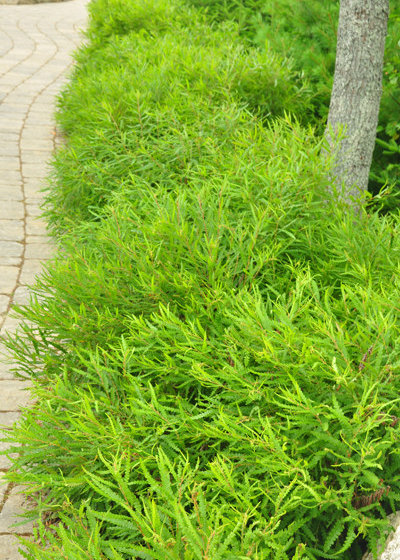
William Cullina
Botanical name: Comptonia peregrinaCommon name: Sweet fern
Origin: Sweet fern is found naturally in Maine, south to Pennsylvania, and at higher elevations south to northern Georgia and around the Great Lakes.
Where it will grow: Cold hardy to -50 degrees Fahrenheit (USDA zone 2; find your zone); prefers colder climates and does not do well in warmer areas, zones 7 and above
Typical plant communities: Habitats include forest openings, barren old fields and disturbed sites.
Light requirement: Full or partial sun; does not grow as large in locations with less sun
Water requirement: Dry soil; drought tolerant once established
Mature size: Depending on conditions, typically grows 2 to 5 feet tall and 4 to 8 feet wide. Spreads underground by rhizomes to form a colony; expansion may be controlled by digging out excess plants. Pruning is rarely needed, as it is fairly slow growing.
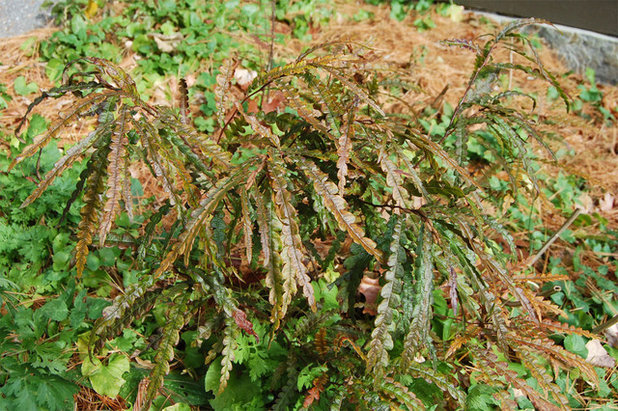 Benefits and tolerances:
Benefits and tolerances: Sweet fern grows best in well-drained, acidic soils; its native habitat includes hillsides and cliffs, so it is well adapted for exposed slopes in the landscape. Its roots host nitrogen-fixing bacteria so that it can help enrich poor or depleted soils. In addition to drought, it also tolerates salty conditions.
Seasonal interest: The fragrant foliage is the main feature of this little shrub; it comes out in April and persists well into the fall. The leaves turn a bronzy shade before dropping — sometimes dried leaves will remain attached through the winter.
Shown: The color in mid-November
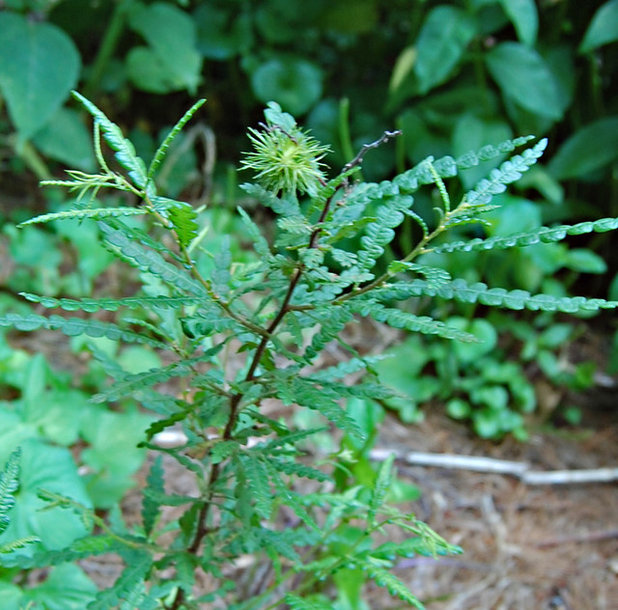 When to plant:
When to plant: Spring is probably the best planting time; sweet fern is difficult to start from seed, as the seeds have a tough coating that slows germination. Scratching the outer coating (called scarification) and treatment with gibberellic acid are reported to improve germination significantly. It also does not transplant well unless a sufficient amount of the shallow lateral roots are preserved; container-grown plants are easier to work with.
The developing seeds are held in a bur-like cluster of bracts that looks a little like a gall or another deformation. This photo shows a maturing seed cluster in mid-June.
Sweet fern unfortunately has not yet become readily available at retail brick-and-mortar nurseries. I have seen it at several native-plant sales and have purchased good-quality plants from online nurseries.
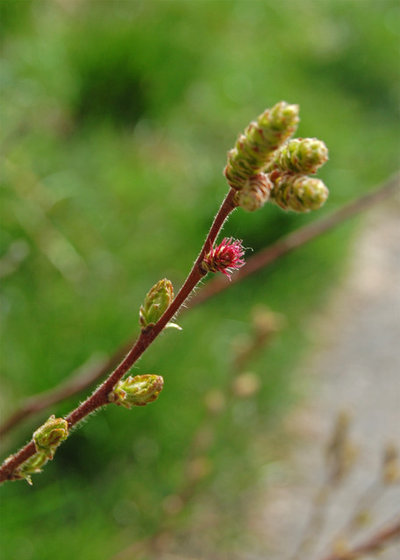 Distinguishing traits.
Distinguishing traits. The fragrant, deeply lobed foliage is the plant’s most attractive feature. It starts out bright green but turns a lustrous dark green as it ages.
Sweet fern has separate male and female flowers that are difficult to spot. The male flowers appear as inch-long catkins near the tips of the branches. The female flowers are smaller and ovoid, occurring along the branch. These are more noticeable when they are covered with little red spikes. Sometimes the male and female flowers are on separate plants (the plant is dioecious). The pollen is transmitted by wind, so insects are not involved in pollination.
Here you can see the terminal male catkins and a female catkin with its red spikelets. Blooming occurs before the leaves come out. This photo was taken in mid-April.
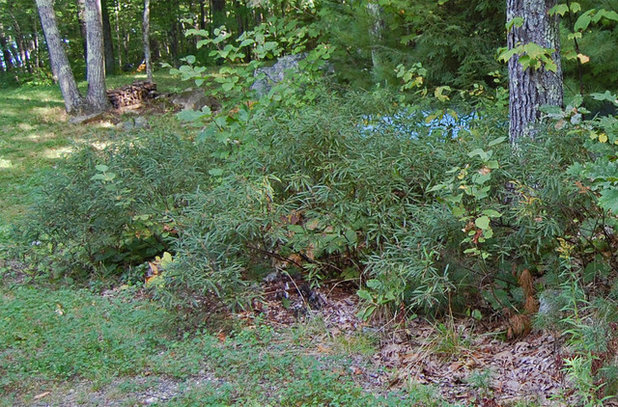 How to use it.
How to use it. Sweet fern’s drought tolerance, salt resistance and ability to grow in poor soils make it an excellent plant to grow along a path or road surface, especially those that are treated with salt for snow and ice removal. Its wide-spreading lateral roots help reduce slope erosion.
The dark green, deeply lobed, glossy leaves give it a unique texture among other shrubs. It can be used to give a fern-like appearance to a dry, sunny site that most ferns will not tolerate. I like to use it near pathways so that people can catch its citrusy, sweet scent when they brush up against it.
As a true native plant, it works well in a naturalistic setting. It pairs well with other plants that share the same natural habitat, such as lowbush blueberry (
Vaccinium angustifolium), goldenrod (
Solidago spp), woodland sunflower (
Helianthus sp), tickseed (
Coreopsis spp) and grasses like little bluestem (
Schizachyrium scoparium) and Pennsylvania sedge (
Carex pensylvanica).
The fragrant leaves and stems can be used to make potpourri and tea. The scent of the crushed leaves is reported to repel insects.
Planting notes. As mentioned, this plant likes cold winter temperatures and does not do well in areas warmer than USDA zone 6. While it tolerates neutral soils, it prefers acidic (pH of 4.5 to 6.5), well-drained conditions, much like blueberries do. It does not do well in heavy clay soils.
It is an alternate host for a blister rust that affects hard pines, like jack (
Pinus banksiana), pitch (
P.rigida), shortleaf (
P. echinata) and loblolly (
P. taeda). While not particularly harmful to the sweet fern, this rust can damage or kill the pine trees.
Sweet fern is a larval host plant for the gray hairstreak butterfly (
Strymon melinus). The seeds are consumed by flicker birds and occasionally by grouse and some small mammals. Deer will browse on the branches in winter and early spring but not in summer, when the foliage is out.
More: Let Nature Inspire Your Landscape: Ideas for a Woodland Garden
Learn more about gardening with native plants in your area





